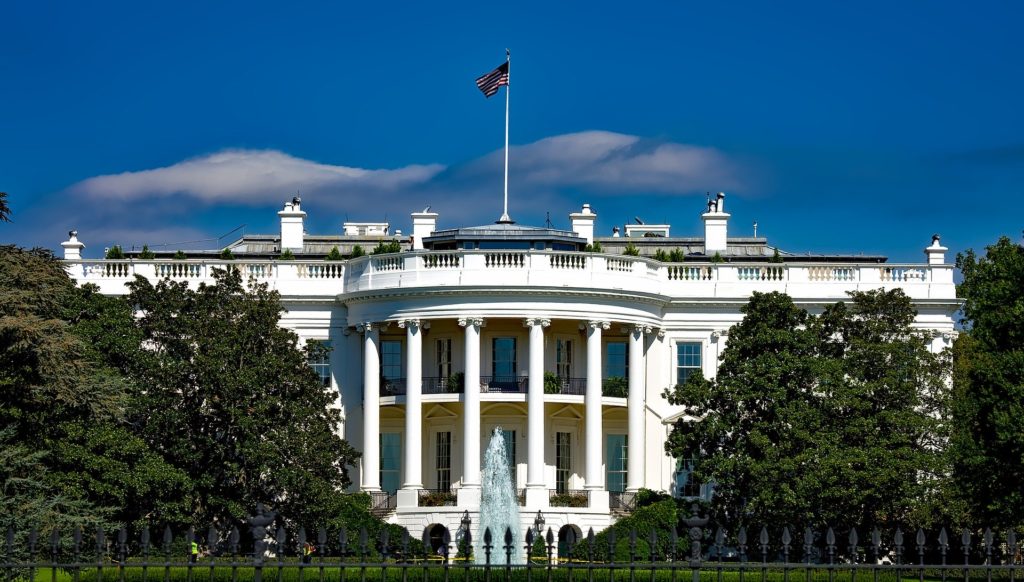
Equality or Need:
A Theological Look at the 2020 Democratic Presidential Candidates’ Tax Plans (Part 2)
Allen Calhoun
Allen Calho
Image from Pixabay
—Part II—
Part I of this article surveyed the 2020 Democratic presidential candidates’ tax plans and situated proposals for raising revenue and reducing the wealth gap in broader tax policy concerns. The proposals are revisiting two questions dormant since the early 1980s: (1) how should tax policy balance the dual concerns of equity and efficiency; and (2) should tax systems seek to redistribute wealth and, if so, to what extent? This Part II examines ways in which the candidates’ tax plans have revived these two questions. First, the question of equity and efficiency, largely settled from the Reagan years through the early Obama years, has become unsettled again.
Equity and efficiency revisited
The candidates’ tax plans represent a subtle but important reframing of the “modern” tax policy question—the one about equity and efficiency. For instance, Joe Biden’s tax plan looks, at first glance, cautious and conservative. Biden’s plan contains no wealth tax proposal. Matthew Yglesias notes that the Biden proposals often sound “more like tedious accounting details than visionary plans.” Nevertheless, those “accounting details” add up to about $3.2 trillion in spending proposals: $1.7 trillion to fund the Biden climate plan, $750 billion for health care, and $750 billion for education.
Biden would tax capital gains and dividend income at ordinary income rates, raise the corporate income tax rate to 28%, eliminate the basis step-up at death, and impose a 15% “real corporate profits tax” on corporations’ reported profits. If there is a unifying theme to Biden’s plan, it is an emphasis on targeting wealthy investors. “Investors” is the key word here.
It may not be the most glamorous of the Democratic plans, but Biden’s large spending targets and willingness to fund them by taxing wealthy investors reflect an important shift: a widespread Democratic rejection of the “Reagan-era conventional wisdom about the relationship between taxes and growth.” Since Ronald Reagan’s election in 1980, most U.S. tax policy has been driven by the conviction that taxes on investment income hurt the economy. The goal of tax policy has been to encourage investment in office buildings, factories, business equipment, and new inventions, all for the purpose of raising productivity and wages. Early signs of cracks in that conviction appeared when the Obama administration started to back away from the consensus in 2013 with its Medicare surtax.
The Biden plan does not question the twin goals that have emerged again and again in tax policy over the past century-and-a-half: equity and efficiency. From the nineteenth-century arguments for a progressive federal income to the current generation of “optimal” tax models, the dominant conception of tax equity has been the utilitarian principle of “ability to pay.” Tax policy has sought to tax those of high ability and make transfers to those of low ability, all the while maintaining sufficient incentive for high-ability taxpayers to produce at levels corresponding to their abilities. An income or earnings tax has typically been used as the measurable proxy for ability.
What the Biden plan does do is embrace the type of thinking represented by Berkeley economists Emmanuel Saez and Gabriel Zucman. In their 2019 book The Triumph of Injustice: How the Rich Dodge Taxes and How to Make Them Pay,1 New York: W. W. Norton, 2019. Saez and Zucman challenge the traditional argument that higher taxes on capital reduce economic growth. They argue instead that regulations affecting private savings behavior are much more important. Thus, we can finance public services by taking money away from the very rich without hurting the economy.
To the extent that there are tax ideas associated with a potential second Trump term, they represent the opposing, traditional narrative. The 2017 TCJA instantiates much of that orthodoxy. A second Trump term would likely continue to assume that equity and efficiency conflict and would continue to push for ever-greater efficiency. Former Trump economic advisor Stephen Moore believes that the second round of tax proposals from Trump would be and should be (1) the enactment of a “universal savings account” allowing people with incomes up to a threshold (of, perhaps, $150,000) to save as much as $10,000 per year tax-free, (2) reduction of middle-class income tax rates from 22% to 15%, and (3) capital-gain rollover provisions.
Both Trump and Biden want our tax system to provide economic growth by honoring efficiency but without sacrificing equity. The difference between their visions turns on whether equity must always be sacrificed to achieve greater efficiency (and thus growth) and, if so, how much equity we should sacrifice.

“The White House”/ David Mark / Pixabay
Like Biden’s proposals, statements by Pete Buttigieg represent the hope that the old narrative is dying. When asked in a CNBC interview if an efficiency-equity tradeoff is inevitable in tax policy, Buttigieg responded ambiguously: “There may be, yeah. I mean, look, it’s great to say that it’s all win/wins, and to some extent it is.”.
Buttigieg acknowledged that “the downside of any tax is it can disincentivize economic activity” (emphasis added). Concerned that any new taxes might do just that, Buttigieg is interested in a wealth tax because it is not as distortionary as an income tax, in “a more equitable use of the estate tax” (the “least distortionary tax probably … because you’re dead”), and a financial transactions tax because its disincentive effect is unproven.
Most of Buttigieg’s arguments for new taxes—be they a revised estate tax, a financial transactions tax, or even simply an increase in top income tax rates—employ solidly traditional arguments. Unmistakably referring to the ability-to-pay principle, he complains that some Americans are simply “not paying their share.”
The seemingly modest tax proposals from the Biden and Buttigieg camps hide a conceptual shift, but not a momentous shift. There is nothing particularly radical in the cautious Democratic skepticism about efficiency as it has typically been defined since the 1980s. Candidates voicing that skepticism are simply reviving an argument that dominated discussions of tax justice in the 1970s, under the shadow of John Rawls’ theory of justice, but went underground in the Reagan era.
Wealth tax and inequality
In contrast, the candidates’ wealth tax proposals appear on the surface to be more of a departure from conventional wisdom. A wealth tax would directly target economic inequality. It would be designed to shrink the wealth gap.
But, again, appearances can be deceiving. Just as a Biden-style plan may be more “radical” than it seems, a Warren- or Sanders-style plan may be less so. Much of the rhetoric surrounding the wealth tax proposals echoes the conventional wisdom that too much economic inequality undermines political stability and, with it, the conditions necessary for economic growth. Even some of the law-and-economics literature, known for its eagerness to subject as many areas of law as possible to market analysis, acknowledges that redistribution of resources is necessary to preserve political stability and, thus, the conditions necessary for economic growth.2 See Robert D. Cooter and Hans-Bernd Schäfer, Solomon’s Knot: How Law Can End the Poverty of Nations, The Kauffman Foundation Series on Innovation and Entrepreneurship (Princeton: Princeton University Press, 2012).
Bernie Sanders’ wealth tax proposal, for instance, relies on a 2011 article in the Los Angeles Times. There Bruce Ackerman and Anne Alstott wrote, “There comes a point at which extreme wealth concentration threatens the very existence of democracy, and we are reaching that point.” Elizabeth Warren’s wealth tax proposal, meanwhile, echoes an “open letter” written by a number of very wealthy Americans. Much of the language in the open letter centers on the risks of a large wealth gap: this “imbalance creates resentment,” and a wealth tax “would slow the growing concentration of wealth that undermines the stability and integrity of our republic.”
But consequentialist arguments of that sort are not the only ones advanced in the open letter. There is a hint of Kantian “statism” in the letter—an assumption that what is good for the whole is good for the parts. “In our republic,” the billionaires write, “it is the patriotic duty of all Americans to contribute what they can to the success of the country, and the wealthiest are no exception.” Put simply, there is a fundamental tension in the open letter between (1) using a wealth tax to close the gap between rich and poor so that the poor can become less poor and (2) improving overall economic prosperity. That any such economic prosperity might still bypass the poor seems to have escaped the authors’ notice. That should not surprise us. Americans are steeped in the notion that what benefits the country as a whole benefits all its members (and, if it doesn’t, the exceptions are best ignored). We are frequently unable to see the slippage between the two concepts because we persist in believing that our commitment to equality ensures universal participation in the nation’s prosperity.
Equality, as Amartya Sen observes, is merely the ticket that must be punched for any idea to survive the political process: “every normative theory of social arrangement that has at all stood the test of time seems to demand equality of something.”3 Amartya Sen, Inequality Reexamined (Cambridge, MA: Harvard University Press, 1992), 12. Even the Reagan-Bush-Clinton-Bush-Obama-Trump orthodoxy seeks equality. That “orthodox” narrative drives toward the greatest possible quantum of efficiency—the state of affairs in which the tax code sways Americans’ choices as little as possible. Aware that it will never reach the goal of a purely efficient tax system, that narrative nevertheless inches closer and closer, maintaining just enough progressivity in rate structures to keep the rumor of equity alive.
Some of the Democratic candidates are more willing to use the word “equality,” just as they are more willing to raise the specter of redistribution. That fact tells us little. Though more reticent in their choice of words, Republicans are every bit as committed to a kind of equality. Once equality of something is promised, then the economic prosperity of the country can proceed unhindered. The part is linked to the whole, or so we are expected to believe.
An important, perhaps dominant, strain of Christian reflection would question the tendency to identify the interests of the parts with the interests of the whole, even though it would endorse the sort of redistribution of resources that a wealth tax promises. That theological line of thinking is the subject of the next part.

Following a number of years practicing law and working in legal publishing, Allen Calhoun obtained a PhD in theological ethics and legal history from the University of Aberdeen. He is currently a McDonald Distinguished Fellow at Emory University’s Center for the Study of Law and Religion and an adjunct faculty member in the Religion and Philosophy Department at Averett University.You can follow him on Twitter @allen_calhoun1.
Recommended Citation
Calhoun, Allen. “Equality or Need: A Theological Look at the 2020 Democratic Presidential Candidates’ Tax Plans (Part 2).” Canopy Forum, January 27, 2020. https://canopyforum.org/2020/01/27/equality-or-need-a-theological-look-at-the-2020-democratic-presidential-candidates-tax-plans-part-2-by-allen-calhoun/

